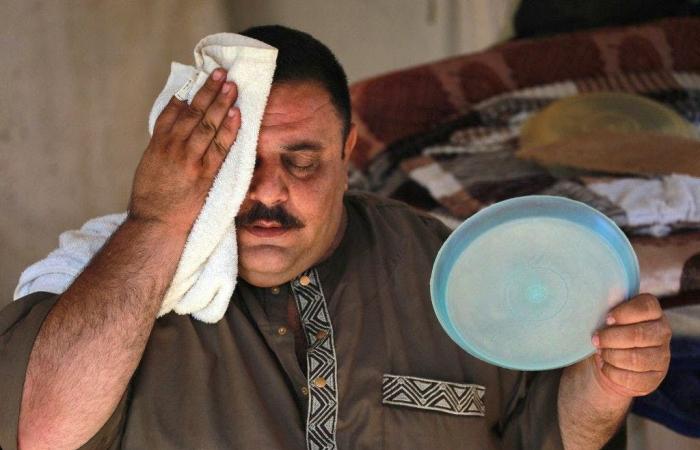In India, extreme temperatures have caused several deaths.
AFP
Heat, technically “heat stress,” kills more people than hurricanes, floods, or any other extreme weather event. But how do we measure it? While Greece experienced the earliest heat wave in its history and many people lost their lives in heatwaves in India and Mexico in recent weeks, here is why degrees Celsius are not enough to measure the heat hazard for humans.
“Silent Killer”
Heat stress occurs when the body is no longer able to naturally cool the body, causing symptoms ranging from dizziness and headaches to organ failure and death. It is caused by prolonged exposure to heat and other environmental factors which, combined, prevent the body from regulating its temperature.
“Heat is a silent killer because the symptoms are not so obvious. And when there are underlying health conditions, the consequences can be very serious, even catastrophic,” says Alejandro Saez Reale of the World Meteorological Organization (WMO). The WMO estimates that heat kills around half a million people a year, but says the true toll could be 30 times higher than estimated.
Greece recently experienced an early heatwave.
AFP
More than the maximums
Air temperature is the most used and easiest to understand meteorological data, but these “maxima” above 35 or 40°C which appear on the front pages of the newspapers tell us little about heat. truly absorbed by the human body. At the same temperature, the sensation of heat is much more bearable under 35°C in the dry air of the desert than in the humid and stifling atmosphere of the jungle, where sweat evaporates poorly.
To assess the real impact of heat on organisms, scientists take into account, in addition to temperature, a series of factors such as humidity, wind speed, clothing, direct sunlight, and even the presence of concrete or greenery in the environment. Several methods exist to measure heat stress and attempt to summarize all these factors in a single figure or graph.
Felt temperature
One of the oldest is the so-called wet bulb temperature. It makes it possible to realize the danger of an air temperature that may seem moderate but which, combined with humidity, can become unbearable, even fatal. Six hours of exposure to 35°C with 100% humidity is enough to kill a healthy person, scientists have estimated in 2023. Beyond that, sweat can no longer evaporate and the body overheats. , until death.
The climate service of the European Copernicus Observatory uses the Universal Thermal Climate Index (UTCI), which takes into account temperature and humidity, but also wind, sunshine and thermal radiation, and classifies heat stress levels from moderate to extreme. The heat index, used by the United States Weather Service, provides a “feels like temperature” based on heat and humidity in shade, along with a colored graph, ranging from yellow ( “caution”) to red (“danger”) and bright red (“extreme danger”).

Limits
Other “thermal stress” indices exist such as the “Tropical Summer Index”, the “Predicted Heat Strain” or the average radiant temperature. But everyone has their limits.
WMO heatwave expert John Nairn said the Universal Thermal Climate Index is a “very poor measure” when used in countries where exposure to heat is more chronic than in Germany, where it was first developed. These indices also do not take into account the non-health impact of heat, he adds, a heat wave can block trains or overload air conditioners, which is also dangerous. “If the heat reaches a level such that it prevents the functioning of an infrastructure, and it starts to fail, there will be a consequence on passengers who will no longer be protected,” says John Nairn.
(afp)








